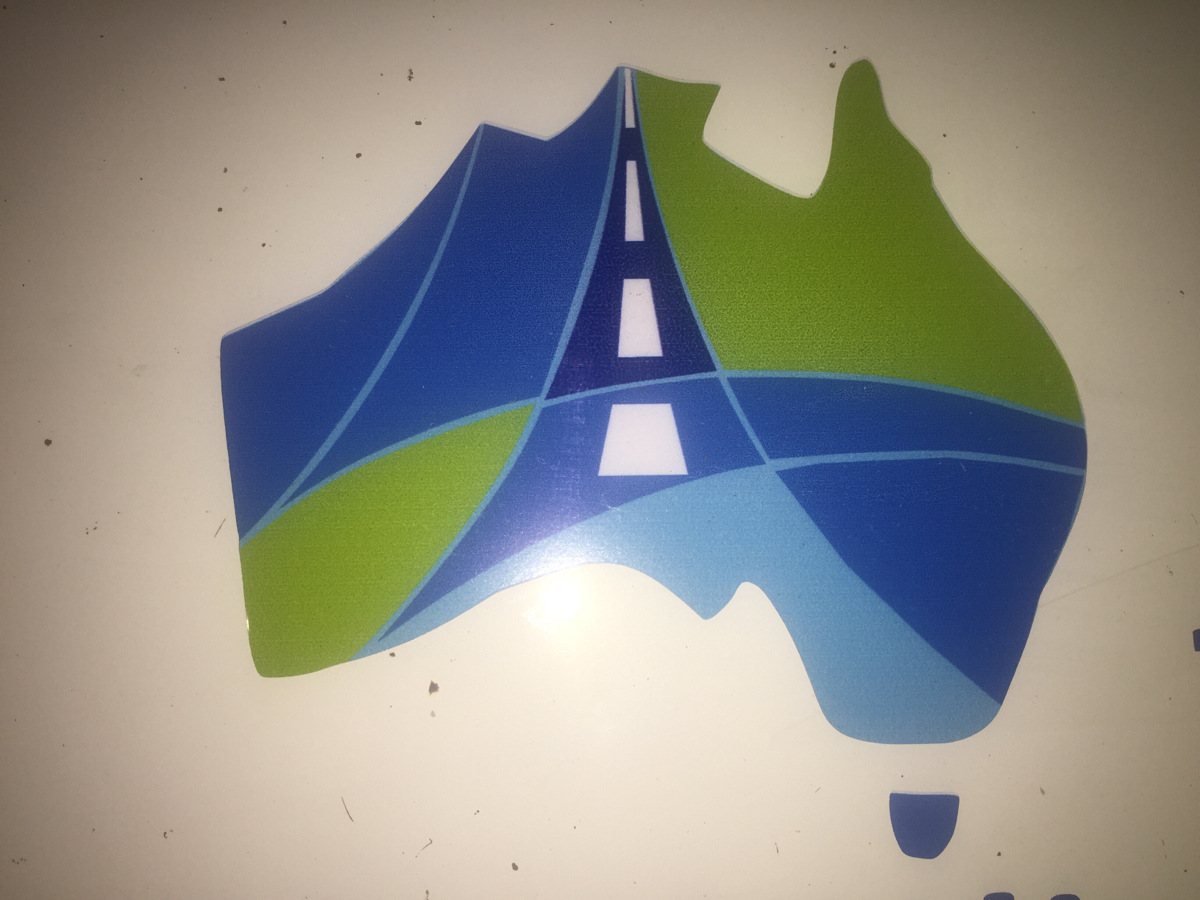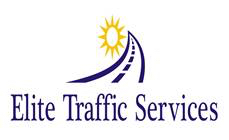Title Page
-
Road
-
Date and Time conducted
-
Conducted by
-
Location
Road alignment and cross-section
Visibility; sight distance
-
Is sight distance adequate for the speed of traffic using the route?
-
Is adequate sight distance provided for intersections and crossings? (for example, pedestrian, cyclist, cattle, railway)
-
Is adequate sight distance provided at all private driveways and property entrances?
Design speed
-
Is the horizontal and vertical alignment suitable for the (85th percentile) traffic speed?
-
are warning signs installed?
-
are advisory speed signs installed?
-
Are the posted advisory speeds for curves appropriate?
Speed limit/speed zoning
-
Is the speed limit compatible with the function, road geometry, land use and sight distance?
Overtaking
-
Are safe overtaking opportunities provided?
Readability by drivers
-
Is the road free of elements that may cause confusion? For example:
-
is alignment of the roadway clearly defined?
-
has disused pavement (if any) been removed or treated?
-
have old pavement markings been removed properly?
-
do tree lines follow the road alignment?
-
does the line of street lights or the poles follow the road alignment?
-
Is the road free of misleading curves or combinations of curves?
Widths
-
Are medians and islands of adequate width for the likely users?
-
Are traffic lane and carriageway widths adequate for the traffic volume and mix?
-
Are bridge widths adequate?
Shoulders
-
Are shoulders wide enough to allow drivers to regain control of errant vehicles?
-
Are shoulders wide enough for broken-down or emergency vehicles to stop safely?
-
Are shoulders sealed?
-
Are shoulders traffickable for all vehicles and road users? (i.e. are shoulders in good condition)
-
Is the transition from road to shoulder safe? (no drop-offs)
Crossfalls
-
Is appropriate superelevation provided on curves?
-
Is any adverse crossfall safely managed (for cars, trucks, etc.)?
-
Do crossfalls (carriageway and shoulder) provide adequate drainage?
Batter slopes
-
Are batter slopes traversable by cars and trucks that run off the road?
Drains
-
Are roadside drains and culvert end walls traversable?
Auxiliary lanes
Tapers
-
Are starting and finishing tapers located and aligned correctly?
-
Is there sufficient sight distance to the end of the auxiliary lane?
Shoulders
-
Are appropriate shoulder widths provided at merges?
-
Have shoulder widths been maintained beside the auxiliary lane?
Signs and markings
-
Have all signs been installed in accordance with the appropriate guidelines?
-
Are all signs conspicuous and clear?
-
Does all linemarking conform with these guidelines?
-
Is there advance warning of approaching auxiliary lanes?
Turning traffic
-
Have right turns from the through lane been avoided?
-
Is there advance warning of turn lanes?
Intersections
Location
-
Are all intersections located safely with respect to the horizontal and vertical alignment?
-
Where intersections occur at the end of high-speed environments (for example, at approaches to towns), are there traffic control devices to alert drivers?
Visibility; sight distance
-
Is the presence of each intersection obvious to all road users?
-
Is the sight distance appropriate for all movements and all road users?
-
Is there stopping sight distance to the rear of any queue or slow-moving turning vehicles?
-
Has the appropriate sight distance been provided for entering and leaving vehicles?
Controls and delineation
-
Are pavement markings and intersection control signs satisfactory?
-
Are vehicle paths through intersections delineated satisfactorily?
-
Are all lanes properly marked (including any arrows)?
Layout
-
Are all conflict points between vehicles safely managed?
-
Is the intersection layout obvious to all road users?
-
Is the alignment of kerbs obvious and appropriate?
-
Is the alignment of traffic islands obvious and appropriate?
-
Is the alignment of medians obvious and appropriate?
-
Can all likely vehicle types be accommodated?
-
Are merge tapers long enough?
-
Is the intersection free of capacity problems that may produce safety problems?
Miscellaneous
-
Particularly at rural sites, are all intersections free of loose gravel?
Signs and lighting
Lighting
-
Has lighting been adequately provided where required?
-
Is the road free of features that interrupt illumination? (for example, trees or overbridges)
-
Is the road free of lighting poles that are a fixed roadside hazard?
-
Are frangible or slip-base poles provided?
-
Ambient lighting: if it creates special lighting needs, have these been satisfied?
-
Is the lighting scheme free of confusing or misleading effects on signals or signs?
-
Is the scheme free of any lighting black patches?
General signs issues
-
Are all necessary regulatory, warning and direction signs in place? Are they conspicuous and clear?
-
Are the correct signs used for each situation, and is each sign necessary?
-
Are all signs effective for all likely conditions? (for example, day, night, rain, fog, rising or setting sun, oncoming headlights, poor lighting)
-
If restrictions apply for any class of vehicle, are drivers adequately advised?
-
If restrictions apply for any class of vehicle, are drivers advised of alternative routes?
Sign legibility
-
In daylight and darkness, are signs satisfactory regarding visibility and:
-
clarity of message?
-
readability/legibility at the required distance?
-
Is sign retroreflectivity or illumination satisfactory?
-
Are signs able to be seen without being hidden by their background or adjacent distractions?
-
Is driver confusion due to too many signs avoided?
Sign supports
-
Are sign supports out of the clear zone?
-
frangible?
-
shielded by barriers (for example, guard fence, crash cushions)?
Markings and delineation
General issues
-
Is the line marking and delineation:
-
appropriate for the function of the road?
-
consistent along the route?
-
likely to be effective under all expected conditions? (day, night, wet, dry, fog, rising and setting sun position, oncoming headlights, etc.)
-
Is the pavement free of excessive markings? (for example, unnecessary turn arrows, unnecessary barrier lines, etc.)
Centrelines, edgelines, lane lines
-
Are centrelines, edgelines, lane lines provided? If not, do drivers have adequate guidance?
-
Have RRPMs been installed where required?
-
If RRPMs are installed, are they correctly placed, correct colours, in good condition?
-
Are profiled (audible) edgelines provided where required?
-
Is the linemarking in good condition?
-
Is there sufficient contrast between linemarking and pavement colour?
Guideposts and reflectors
-
Are guideposts appropriately installed?
-
Are delineators clearly visible?
-
Are the correct colours used for the delineators?
-
Are the delineators on guard fences, crash barriers and bridge railings consistent with those on guideposts?
Curve warning and delineation
-
Are curve warning signs and advisory speed signs installed where required?
-
Are advisory speed signs consistent along the route?
-
Are the signs correctly located in relation to the curve? (i.e. not too far in advance)
-
Are the signs large enough?
-
Are chevron alignment markers (CAMs) installed where required?
-
Is the positioning of CAMs satisfactory to provide guidance around the curve?
-
Are the CAMs the correct size?
-
Are CAMs confined to curves? (not used to delineate islands, etc)
Crash barriers and clear zones
Clear zones
-
Is the clear zone width traversable? (i.e. drivable)
-
Is the clear zone width free of rigid fixtures? (if not, can all of these rigid fixtures be removed or shielded?)
-
Are all power poles, trees, etc., at a safe distance from the traffic paths?
-
Is the appropriate treatment or protection provided for any objects within the clear zone?
Crash barriers
-
Are crash barriers installed where necessary?
-
Are crash barriers installed at all necessary locations in accordance with the relevant guidelines?
-
Are the barrier systems suitable for the purpose?
-
Are the crash barriers correctly installed?
-
Is the length of crash barrier at each installation adequate?
-
Is the guard fence attached correctly to bridge railings?
-
Is there sufficient width between the barrier and the edge line to contain a broken-down vehicle?
End treatments
-
Are end treatments constructed correctly?
-
Is there a safe run-off area behind breakaway terminals?
Fences
-
Are pedestrian fences frangible?
-
Are vehicles safe from being speared by horizontal fence railings located within the clear zone?
Visibility of barriers and fences
-
Is there adequate delineation and visibility of crash barriers and fences at night?
Traffic signals
Operations
-
Are traffic signals operating correctly?
-
Are the number, location and type of signal displays appropriate for the traffic mix and traffic environment?
-
Where necessary, are there provisions for visually impaired pedestrians? (for example, audio-tactile push buttons, tactile markings)
-
Where necessary, are there provisions for elderly or disabled pedestrians? (for example, extended green or clearance phase)
-
Is the controller located in a safe position? (i.e. where it is unlikely to be hit, but maintenance access is safe)
-
Is the condition (especially skid resistance) of the road surface on the approaches satisfactory?
Visibility
-
Are traffic signals clearly visible to approaching motorists?
-
Is there adequate stopping sight distance to the ends of possible vehicle queues?
-
Have any visibility problems that could be caused by the rising or setting sun been addressed?
-
Are signal displays shielded so that they can be seen only by the motorists for whom they are intended?
-
Where signal displays are not visible from an adequate distance, are signal warning signs and/or flashing lights installed?
-
Where signals are mounted high for visibility over crests, is there adequate stopping sight distance to the ends of traffic queues?
-
Is the primary signal free from obstructions on the nearside footway to approaching drivers? (trees, light poles, signs, bus stops, etc.)
Pedestrians and cyclists
General issues
-
Are there appropriate travel paths and crossing points for pedestrians and cyclists?
-
Is a safety fence installed where necessary to guide pedestrians and cyclists to crossings or overpasses?
-
Is a safety barrier installed where necessary to separate vehicle, pedestrian and cyclist flows?
-
Are pedestrian and bicycle facilities suitable for night use?
Pedestrians
-
Is there adequate separation distance between vehicular traffic and pedestrians on footways?
-
Is there an adequate number of pedestrian crossings along the route?
-
At crossing points is fencing oriented so pedestrians face oncoming traffic?
-
Is there adequate provision for the elderly, the disabled, children, wheelchairs and baby carriages? (for example, holding rails, kerb and median crossings, ramps)
-
Are adequate hand rails provided where necessary? (for example, on bridges, ramps)
-
Is signing about pedestrians near schools adequate and effective?
-
Is signing about pedestrians near any hospital adequate and effective?
-
Is the distance from the stop line to a cross walk sufficient for truck drivers to see pedestrians?
Cyclists
-
Is the pavement width adequate for the number of cyclists using the route?
-
Is the bicycle route continuous? (i.e. free of squeeze points or gaps)
-
Are drainage pit grates bicycle safe?
Public transport
-
Are bus stops safely located with adequate visibility and clearance to the traffic lane?
-
Are bus stops in rural areas signposted in advance?
-
Are shelters and seats located safely to ensure that sight lines are not impeded? Is clearance to the road adequate?
-
Is the height and shape of the kerb at bus stops suitable for pedestrians and bus drivers?
Bridges and culverts
Design features
-
Are bridges and culverts the full formation width?
-
Are bridge and culvert carriageway widths consistent with approach conditions?
-
Is the approach alignment compatible with the 85th percentile travel speed?
-
Have warning signs been erected if either of the above two conditions (i.e. width and speed) are not met?
Crash barriers
-
Are there suitable traffic barriers on bridges and culverts and their approaches to protect errant vehicles?
-
Is the connection between barrier and bridge safe?
-
Is the bridge free of kerbing that would reduce the effectiveness of barriers or rails?
Miscellaneous
-
Are pedestrian facilities on the bridge appropriate and safe?
-
Is fishing from the bridge prohibited? If not, has provision been made for safe fishing?
-
Does delineation continue over the bridge?
Pavement
Pavement defects
-
Is the condition of the pavement edges satisfactory?
-
Is the transition from pavement to shoulder free of dangerous edge drop offs?
-
Is the pavement free of defects (for example, excessive roughness or rutting, potholes, loose material, etc.) that
-
could result in safety problems (for example, loss of steering control)?
Skid resistance
-
Does the pavement appear to have adequate skid resistance, particularly on curves, steep grades and approaches to intersections?
-
Has skid resistance testing been carried out where necessary?
Ponding
-
Is the pavement free of areas where ponding or sheet flow of water could contribute to safety problems?
Loose stones/material
-
Is the pavement free of loose stones and other material?
Parking
General issues
-
Are the provisions for, or restrictions on, parking satisfactory in relation to traffic safety?
-
Is the frequency of parking turnover compatible with the safety of the route?
-
Is there sufficient parking for delivery vehicles so that safety problems due to double parking do not occur?
-
Are parking manoeuvres along the route possible without causing safety problems? (for example, angle parking)
-
Is the sight distance at intersections and along the route, unaffected by parked vehicles?
Provision for heavy vehicles
Design issues
-
Are overtaking opportunities available for heavy vehicles where volumes are high?
-
Does the route generally cater for the size of vehicle likely to use it?
-
Is there adequate manoeuvring room for large vehicles along the route, at intersections, roundabouts, etc.?
-
Is access to rest areas and truck parking areas adequate for the size of vehicle expected? (consider acceleration, deceleration, shoulder widths, etc.)
Pavement/shoulder quality
-
Are shoulders sealed at bends to provide additional pavement for long vehicles?
-
Is the pavement width adequate for heavy vehicles?
-
In general, is the pavement quality sufficient for the safe travel of heavy and oversized vehicles?
-
On truck routes, are reflective devices appropriate for truck drivers' eye heights?
Floodways and causeways
Ponding, flooding
-
Are all sections of the route free from ponding or flow across the road during wet weather?
-
If there is ponding or flow across the road during wet weather, is there appropriate signposting?
-
Are floodways and causeways correctly signposted?
Safety of devices
-
Are all culverts or drainage structures located outside the clear roadside recovery area?
-
If not, are they shielded from the possibility of vehicle collision?
Miscellaneous
Landscaping
-
Is landscaping in accordance with guidelines? (for example, clearances, sight distance)
-
Will existing clearances and sight distances be maintained following future plant growth?
-
Does the landscaping at roundabouts avoid visibility problems?
Temporary works
-
Are all locations free of construction or maintenance equipment that is no longer required?
-
Are all locations free of signs or temporary traffic control devices that are no longer required?
Headlight glare
-
Have any problems that could be caused by headlight glare been addressed? (for example, a two-way service road close to main traffic lanes, the use of glare fencing or screening)
Roadside activities
-
Are the road boundaries free of any activities that are likely to distract drivers?
-
Are all advertising signs installed so that they do not constitute a hazard?
Errant vehicles
-
Is the roadside furniture on the verges and footways free of damage from errant vehicles that could indicate a possible problem, hazard or conflict at the site?
Other safety issues
-
Is the embankment stability safe?
-
Is the route free of unsafe overhanging branches?
-
Is the route free of visibility obstructions caused by long grass?
-
Are any high-wind areas safely dealt with?
-
If back-to-back median kerbing is used is it:
-
adequately delineated?
-
obvious where it starts?
-
obvious at intersections?
-
unlikely to be a hazard to pedestrians?
Rest areas
-
Is the location of rest areas and truck parking areas along the route appropriate?
-
Is there adequate sight distance to the exit and entry points from rest areas and truck parking areas at all times of the day?
Animals
-
Is the route free from large numbers of animals? (for example, cattle, sheep, kangaroos, koalas, wombats, etc.)
-
If not, is it protected by animal-proof fencing?
Safety aspects for heavy vehicles not already covered
-
Have all other matters which may have a bearing on safety for heavy vehicles been addressed?
Completion
-
Comments and recommendations
-
Audited by:ef












